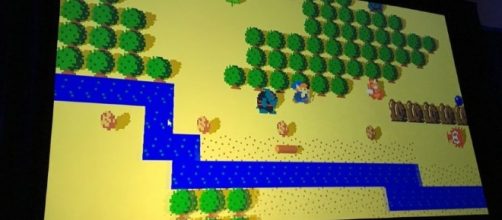Did Zelda's brilliance save the Nintendo Switch?
The Legend Of Zelda: Breath of the Wild (BOTW) has put itself firmly in contention for the title of 'best Zelda game ever', rubbing shoulders with Ocarina of Time and Link to the Past. From critical reviews to fan response, praise has been liberally heaped on the game, with many pointing out the stunning art direction, drastic overhaul of equipment and abilities, alongside brave world design with a focus on exploration over completing levels in isolation. The game is packaged in a piece of hardware that feels tailor-made for a seamless experience, which is a great relief after the confused identity and DNA of the Wii U.
The Nintendo Switch however is shaping up to be a massive commercial success having already passed 1.5 million units sold despite the relatively poor roster of launch titles, thanks in no small part to the critical response to BOTW. While Zelda's precise impact on the Switch launch cannot be truly quanitified, president of Nintendo America, Reggie Fils-Aimé, has recently announced it is the fastest selling standalone launch title in Nintendo's history, which is a statistic that speaks for itself. It is broadly recognised that the Zelda franchise was in desperate need of a shot in the arm, after nearly a decade of creative inertia during the 3D platforming era.
Zelda: Breath of the Wild GDC talk now online https://t.co/5MdxiAkWTs Want to see footage of the 2D prototype that's been talked about? pic.twitter.com/hVAjivR8ZW
— GamesIndustry (@GIBiz) March 10, 2017
Going back to Link's roots
For those interested in how Nintendo achieved this transformative feat, and the inner workings of the games industry in general, there was a genuine treat in store at the Game Developers Conference (GDC) 17 earlier this month.
Three principle developers of the game were discussing how they went about the task of stripping back the pre-conceptions of what a Zelda game is, and how to reinvent it for the Switch. They went on to showcase a prototype version of BOTW which was instantly reminiscent of the original NES game. In their presentation demo, the footage flips between the gorgeous Switch gameplay of the full release and the classic top down view which will hit the nostalgic nerve of veteran gamers.
The prototype was used as a functional demo by the development team to effectively work on game mechanisms (such as Shiekah Slate abilities and elemental interactions) and level design. They described it as a 'white board' from which they could experiment with complex game concepts in an easy to digest way.
The prototype has proven so popular there are now calls on social media for it to be developed further and released as a separate game in the future. While you're at it Nintendo, get to work a new open world Pokémon game in the style of Red/ Blue on the GameBoy.

